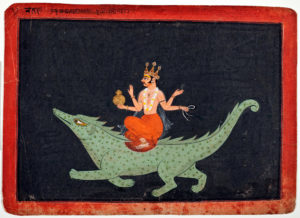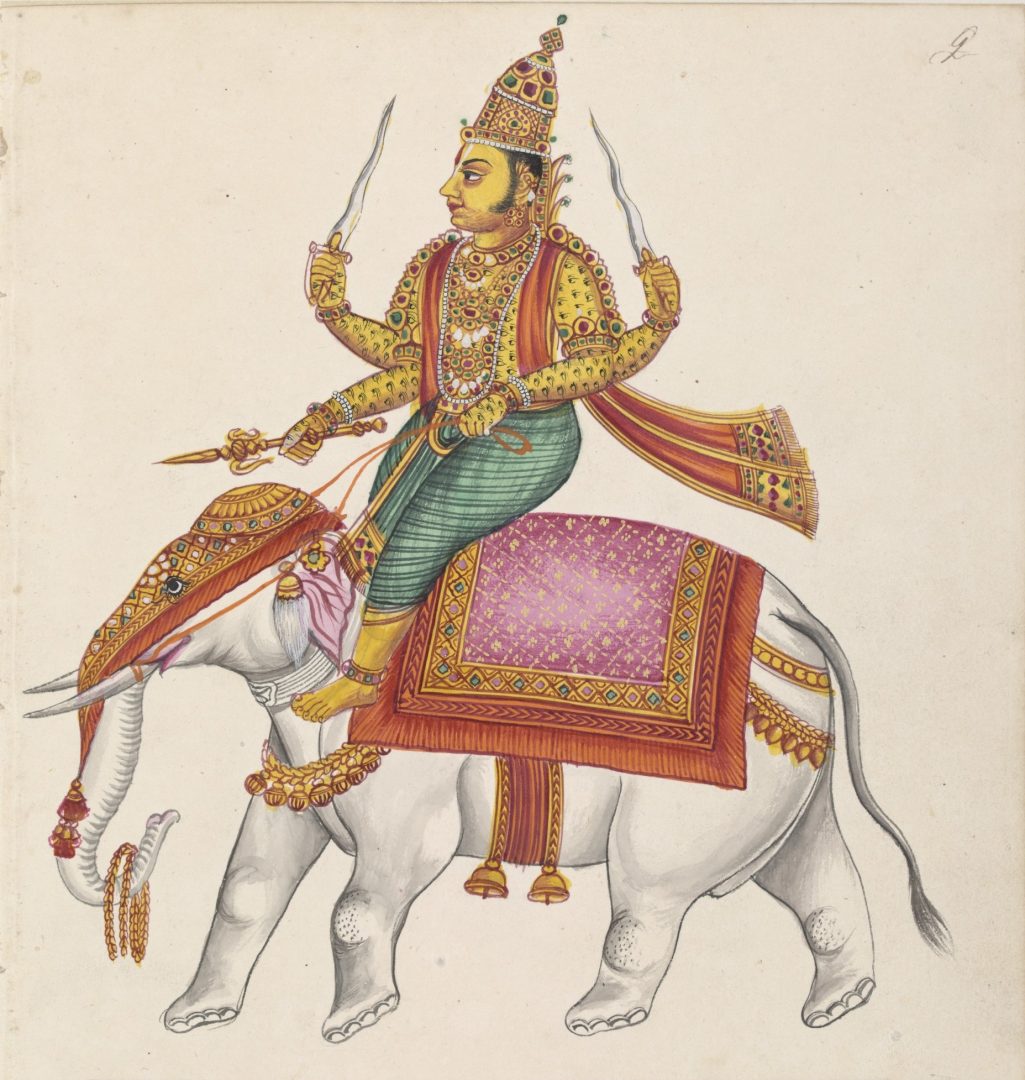The god Indra is the king of the Vedic gods, and is god of thunder, lightning, and rain. The Vedic gods themselves were deities worshiped by tribal Aryan invaders from Persia into India between 2000 and 1200 B.C.E. In India, the deities became known as gods of Veda. In “Vedic Mythology,” A.A. Macdonell assigns human-like qualities to the Vedic gods, such as motivations and passions, with the exception that they are immortal.
 The Vedic gods thus functioned as role models for their worshipers to aspire to greatness and maximum living.
The Vedic gods thus functioned as role models for their worshipers to aspire to greatness and maximum living.
Indra has been likened to “hammer gods” such as Thor and is considered a favorite, owing to the number of songs that mention him. His social importance is indicated through more than two hundred such hymns. Indra is also described as the most powerful of the Vedic gods.
As king of the Vedic gods, Indra’s rival is Varuna, who was deposed by Indra himself. As god of war, Indra is credited with aiding the invading Aryan tribes in their conquest and overpowering of defenders.
Indra uses the thunderbolt for his weapon and causes the rains
In line with his association with Thor and being the god of thunder, lightning, and rain, Indra uses the thunderbolt for his weapon and causes the rains. This function of saving the world from drought with his rain also associates Indra to being a god of fertility. One supporting story in Indian mythology has Indra fight and conquer Vritra, a demon responsible for droughts, and Indra releases the captive cloud-cattle.
Other Characteristics of Indra
In some songs and hymns, Indra is described with many human male characteristics. His strength, handsomeness, and affection for ornamentation and drink are portrayed in songs in various ways.
In movement, Indra has been associated with a golden, horse-drawn chariot, or his white elephant Airavala. Indra’s weapons include the thunderbolt, bow and arrows, the hook, and the net.
As a warrior god, Indra is commonly looked upon for salvation from people’s enemies. The Aryan invaders thus invoked Indra before the battle. Indra’s qualities of befriending and aiding his worshipers were looked upon for gaining wealth, wives, livestock, and even sons for heirs.
Indra has been depicted in art led by the gods Brahma, Madhava, and Sharva as they praise the Dancing Bhadrakali.
Indra is depicted in human form, with long mustache and sideburns, wearing a headdress similar to two other gods. Indra is the last in a line of three praising the dancer.
 In other art, the thunderbolt of Indra and the bell worn by his elephant are depicted to be held by Durga, the great Warrior Goddess, in her multiple arms, along with other gods’ weapons. The male gods feared Durga and thus gave as a tribute to their own powers in order to escape total annihilation from her wrath. Durga herself represents the lethal energy of divine anger turned against evil.
In other art, the thunderbolt of Indra and the bell worn by his elephant are depicted to be held by Durga, the great Warrior Goddess, in her multiple arms, along with other gods’ weapons. The male gods feared Durga and thus gave as a tribute to their own powers in order to escape total annihilation from her wrath. Durga herself represents the lethal energy of divine anger turned against evil.
The punitive weapon of Indra becomes in Buddhism a symbol of the strongest power in the universe, compassion. When Indra became assimilated into the Buddhist culture, the weapon went with him, and on to China.
Indra’s befriending of worshipers is depicted in the story of Sadaprarudita and Dharmodgata, which appears in the Prajnaparamita. In this story, Sadaprarudita has a vision, during a moment of personal desperation, to visit Gandhavati, the magnificent paradise of the bodhisattva Dharmodgata. But, once on his way, Sadaprarudita becomes again desperate and hopeless for having no gift to offer upon his arrival. He even tried unsuccessfully to sell himself. The god Indra appears, as a young man, and makes an offer to buy Sadaprarudita’s heart, blood, and bone marrow.
When Saraprarudita complies and begins to take his body apart for Indra incarnate, the daughter of a wealthy merchant sees him and becomes impressed by his selflessness and offers to accompany him and help him on his journey. The daughter gets her parents and a caravan of some 500 maidens in as many carriages to make the trip.
At this point, Indra drops pretense and disguise and restores the faithful Sadaprarudita’s body to normal. Thus Sadararudita and the group reach Gandhavati and meet the bodhisattva Dharmodgata, and even worship the Prajnaparamita on golden tablets.






